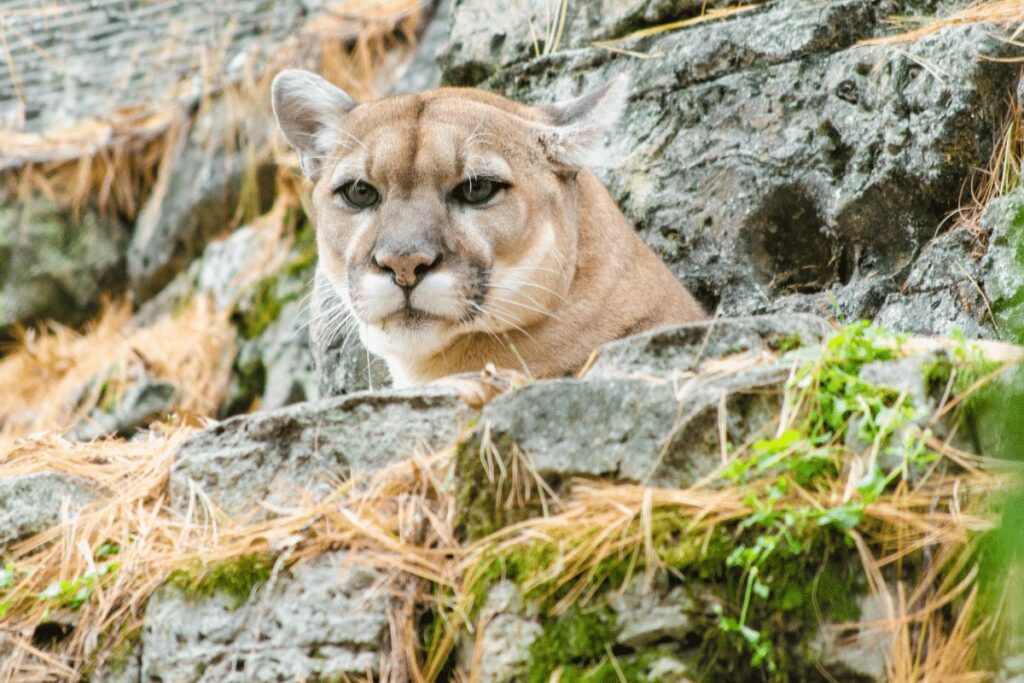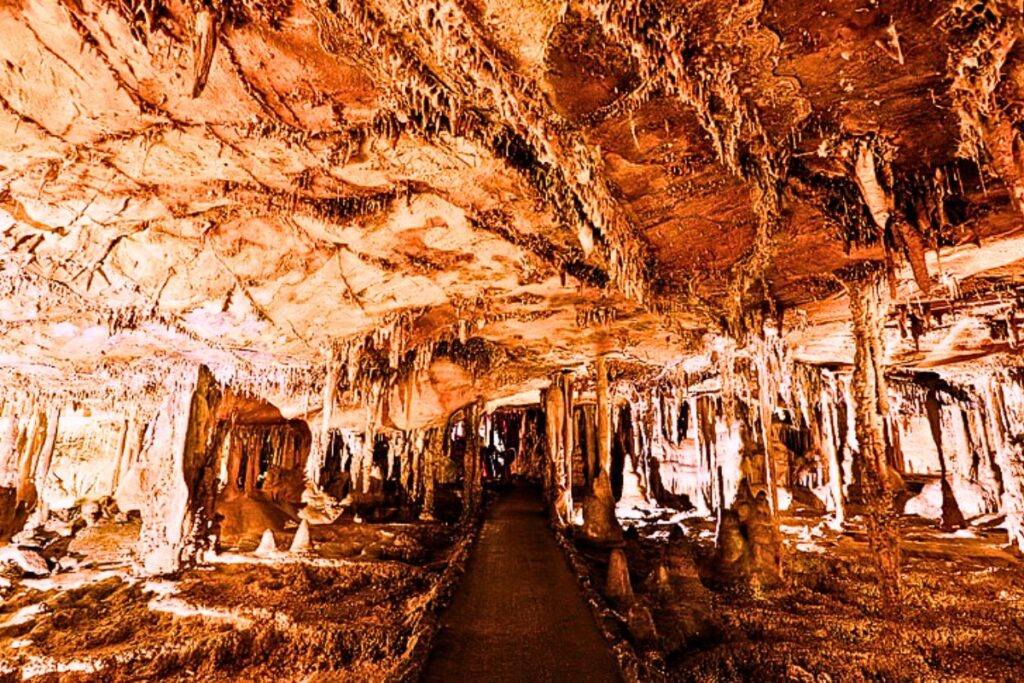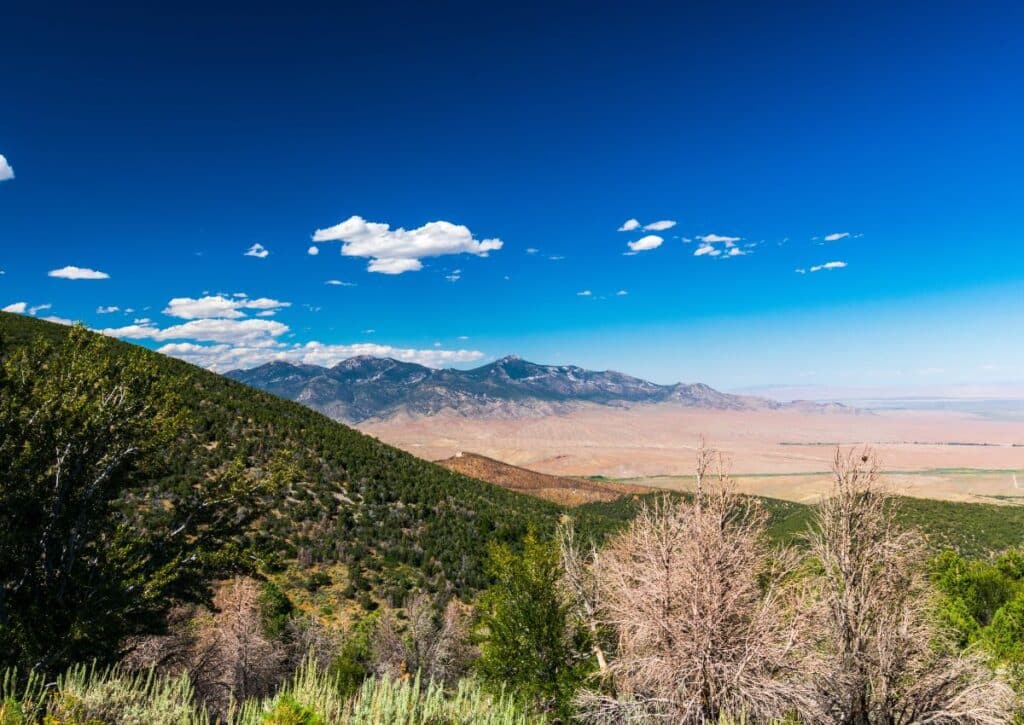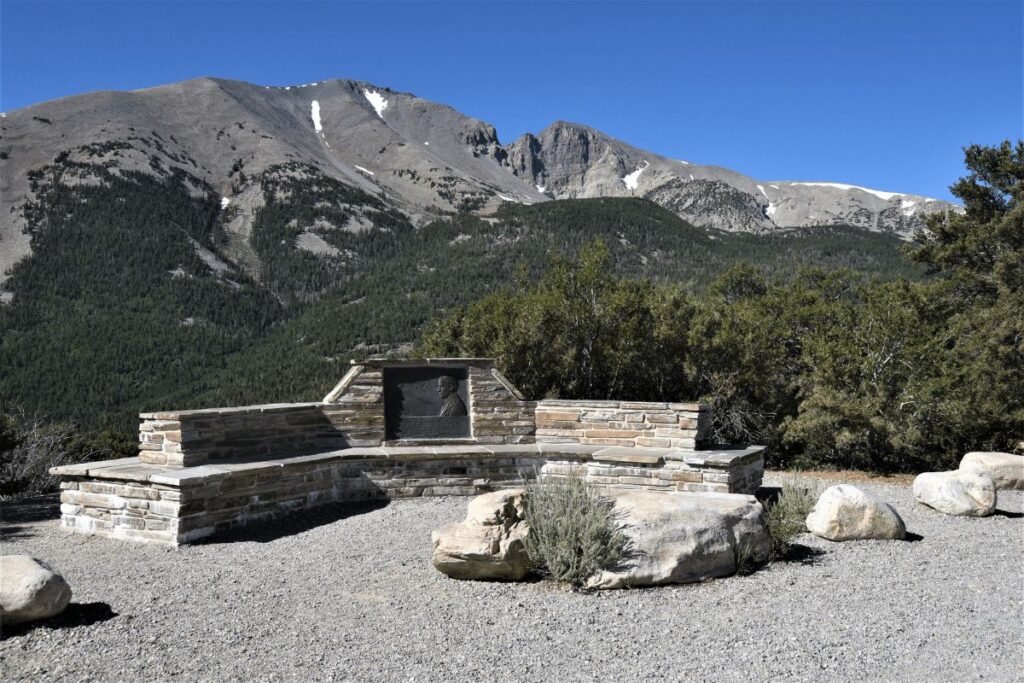Discover 17 animals in Great Basin National Park with tips for best viewing spots and wildlife safety.
We’re heading into Great Basin National Park to meet the locals—from majestic bighorn sheep to stealthy bobcats. This park isn’t just a panorama of nature’s beauty; it’s a full-on wildlife rendezvous where you can learn how each creature plays its part in the ecosystem.
Along our journey, we’ll give you the best tips for spotting these critters and staying safe while you’re at it. Whether you’re cruising the Wheeler Peak Scenic Drive or trekking through diverse habitats, get ready for a wild encounter with the 17 most fascinating animals in Great Basin National Park.
Biodiversity in Great Basin National Park
From the towering peaks to the ancient bristlecone pine forests and sparkling alpine lakes, Great Basin National Park is a treasure trove of biodiversity.
As you delve deeper into the park, you’ll find yourself immersed in a world teeming with life, where a variety of mammals, birds, reptiles, amphibians, and invertebrates thrive in their unique habitats.
The park’s rich biodiversity not only creates a captivating natural tapestry but also presents an exciting opportunity for you to encounter and learn about these fascinating creatures.
So, grab your binoculars, lace up your hiking boots, and let’s embark on an exhilarating adventure through the wild wonders of Great Basin National Park.
In the following sections, we’ll introduce you to the diverse inhabitants of this remarkable park, sharing tips and insights that will enrich your experience and leave you longing to explore even more.
Bighorn Sheep
Bighorn sheep are the largest species of wild sheep in North America. They get their name from their large, curved horns, which can grow up to two feet long. Males (rams) also have thick fur on their necks and shoulders, called a “mane.”
Females (ewes) are smaller than males and don’t have a mane. Both male and female bighorn sheep have brown fur with white stripes on their legs.
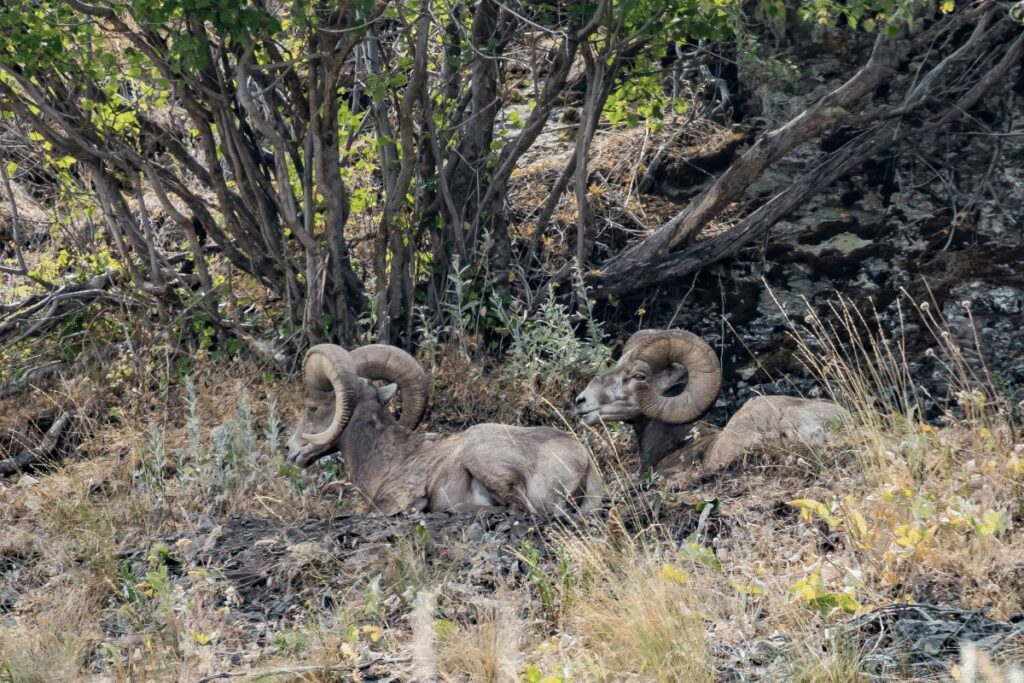
Bighorn sheep live in mountains and foothills in the western United States and Canada. In Great Basin National Park, you can find them near Mount Wheeler and in the Snake Range. Bighorn sheep are good climbers and can jump up to six feet high.
They use these skills to escape predators and to find food. Bighorn sheep eat grasses, leaves, and flowers. During the winter, when there is less food available, they eat more woody plants.
Bighorn sheep live in herds of 10-30 animals led by a dominant male. Breeding happens in November and December, and lambs are born six months later in May or June. Lambs weigh about 10 pounds at birth but can grow up to 200 pounds as adults!
Bobcats
The Great Basin National Park is home to a variety of wildlife, including bobcats. Bobcats are medium-sized cats that can be found throughout North America. In Great Basin National Park, bobcats can be found in the sagebrush and pinyon-juniper habitats.
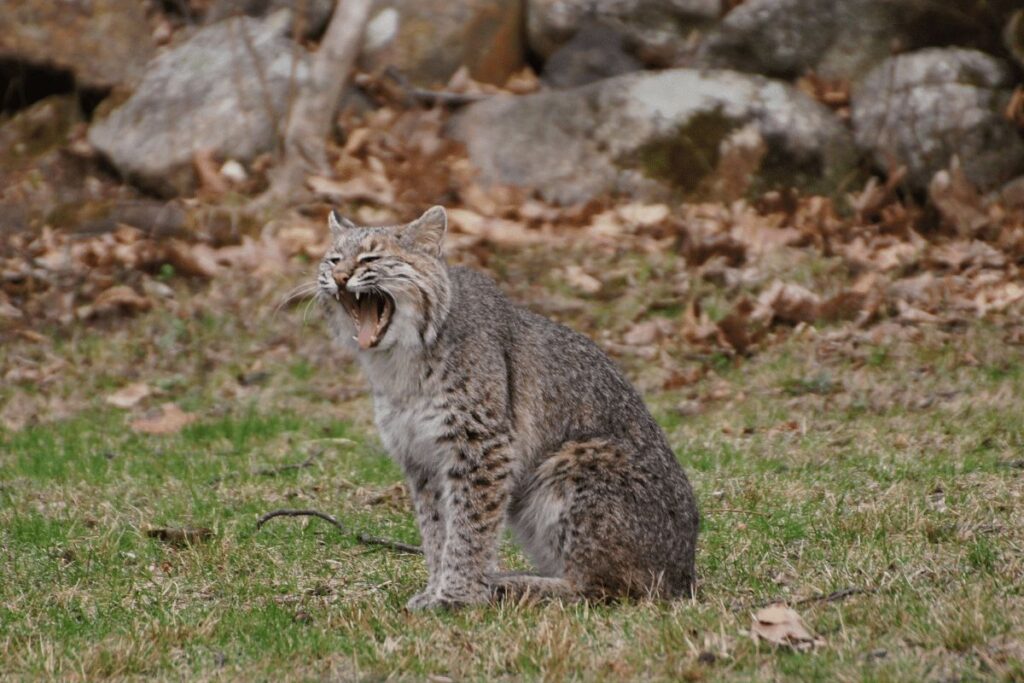
Bobcats are solitary hunters that stalk their prey. Their diet consists primarily of small mammals, such as rabbits and squirrels. They will also eat reptiles, birds, and insects. Bobcats are nocturnal animals, so they are most active at night.
If you’re lucky enough to see a bobcat in Great Basin National Park, take caution not to approach it or startle it. These animals can be dangerous if they feel threatened. If you do encounter a bobcat, stay calm and give it space to move away.
Are there bears at Great Basin National Park?
When visitors to Great Basin National Park look up to the craggy mountains and dense forests, they might wonder about the wildlife that inhabit such a pristine ecosystem.
A frequently asked question is: “Are there bears at Great Basin National Park?” Recent studies provide not just a simple answer, but an unfolding narrative of conservation, ecology, and adaptability.
According to an article titled “Study: Absent for more than 80 years, bears returning to Nevada’s Great Basin” published by the Wildlife Conservation Society (WCS) in 2017, black bears are indeed returning to portions of their historical range in the Great Basin of Nevada, including areas within and around the Great Basin National Park.
This comprehensive research, which can be found here, was conducted in collaboration with the Nevada Department of Wildlife (NDOW) and the University of Nevada-Reno.
Historical Context
The article sheds light on the fact that black bears had been absent from the Great Basin for over 80 years. The early 20th century saw unregulated hunting, conflicts between bears and settlers’ livestock, and detrimental landscape changes, such as the clear-cutting of forests, which contributed to the bears’ local extirpation.
Yellow-bellied Marmot
The yellow-bellied marmot is a member of the squirrel family and can be found in mountainous regions of North America. These chubby creatures have golden-brown fur, and as their name suggests, a yellow belly. Marmots are the heaviest members of the squirrel family, and can weigh up to 8 pounds.
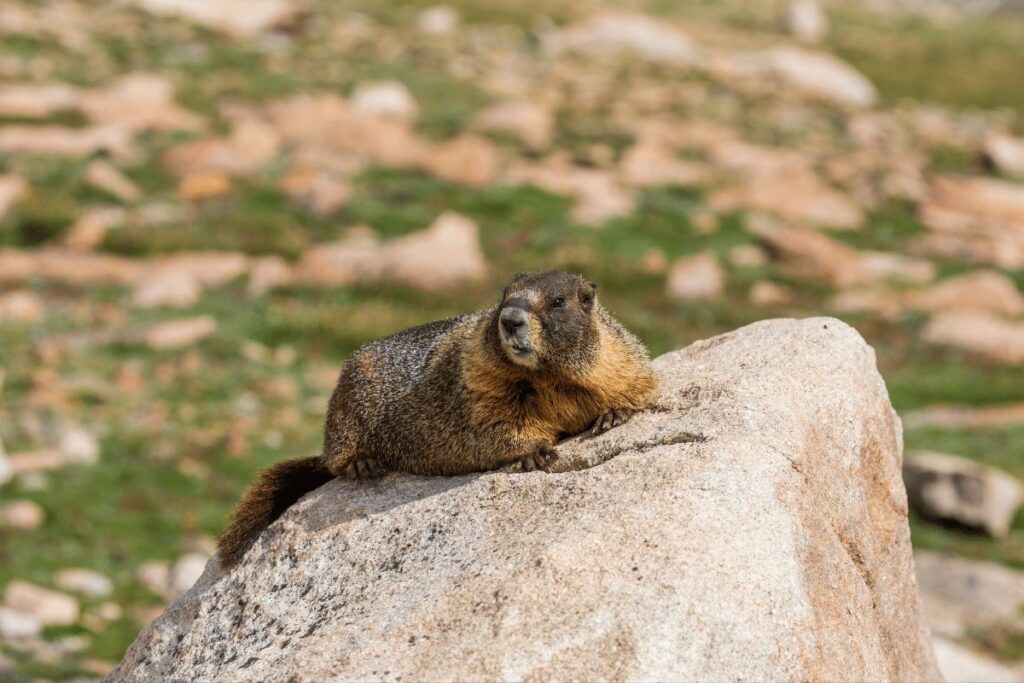
Marmots are social animals and live in colonies of up to 12 individuals. They spend most of their time sunbathing or eating, as they need to build up a thick layer of fat to survive the long winter months. In fact, marmots hibernate for up to seven months out of the year!
These fascinating creatures can be seen at Great Basin National Park in Nevada, where they live among the rocky cliffs and talus slopes. If you’re lucky enough to spot a yellow-bellied marmot, you may see it whistling or barking to warn its colony of potential danger.
Mule Deer
Mule deer (Odocoileus hemionus) are the most common ungulate in Great Basin National Park. They are named for their large mule-like ears. Mule deer can be found throughout the park in a variety of habitats, from sagebrush flats to mountain meadows.
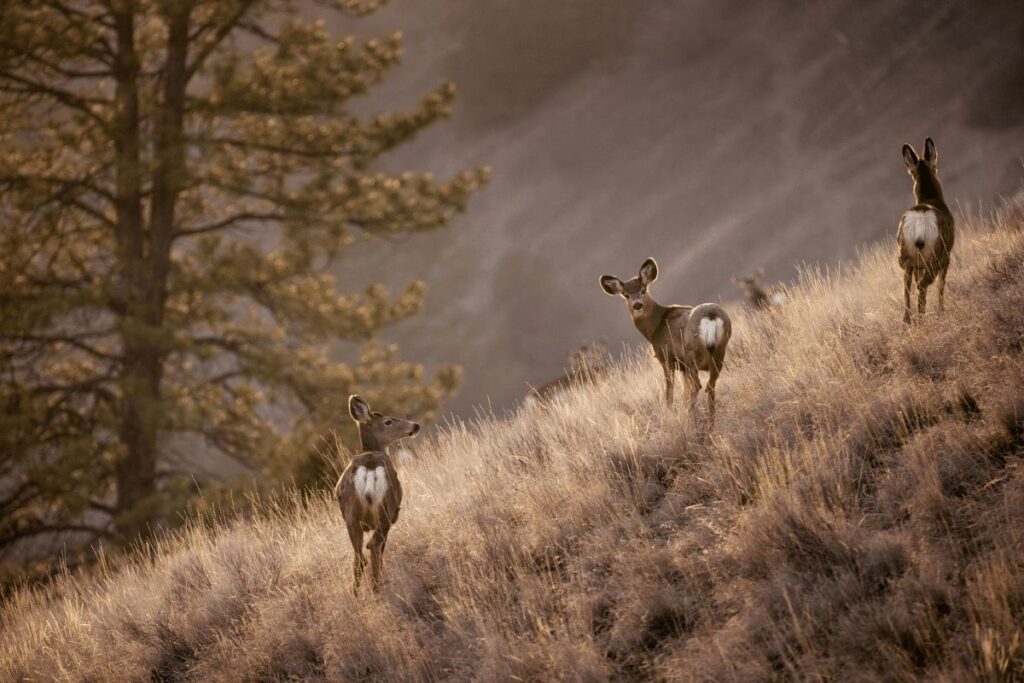
Mule deer are browsers, eating a wide variety of plants. In the spring and summer, they prefer green vegetation such as leaves, shoots, and flowers.
In the fall and winter, they switch to a diet of twigs and buds. Mule deer are also known to eat acorns, which they find beneath oak trees.
Mating season for mule deer occurs from late November to early December. During this time, bucks will compete for does by engaging in antler wrestling matches.
The victor of these matches gets to mate with the doe of his choice. After a gestation period of around 7 months, fawns are born in the spring.
Mule deer are generally calm animals, but they can be dangerous when startled or cornered.
If you see a mule deer while hiking in Great Basin National Park, give it plenty of space and do not approach it too closely.
Belding’s Ground Squirrels
There are several different types of squirrels that call Great Basin National Park home, but one of the most interesting is the Belding’s ground squirrel.
These squirrels are found in the sagebrush steppe habitat and are well-adapted to the arid conditions.
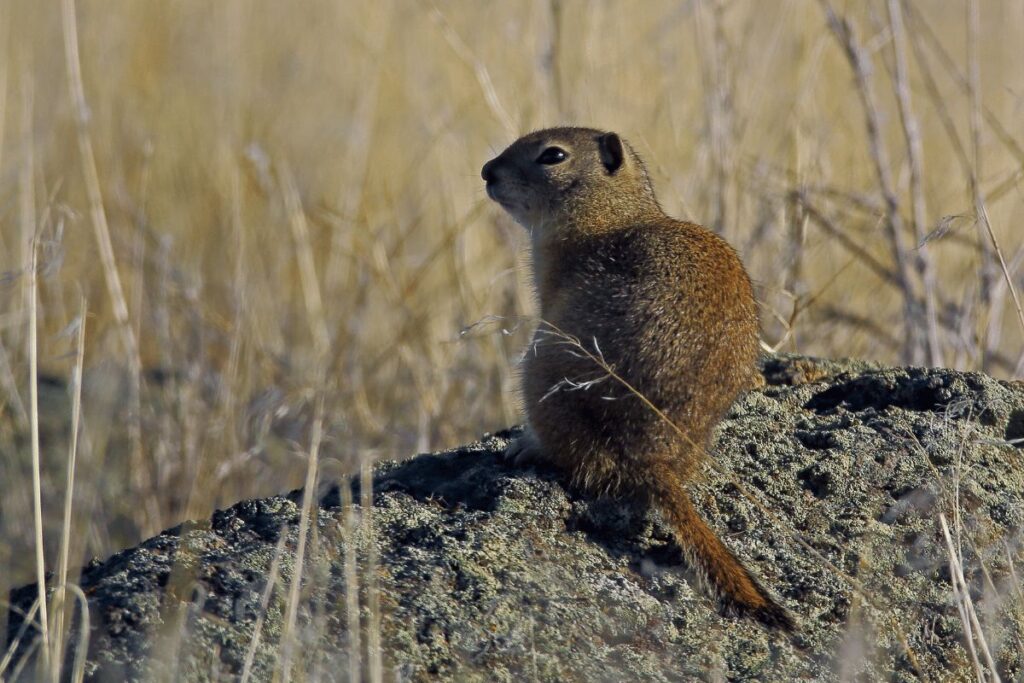
Belding’s ground squirrels are small, reddish-brown rodents with a light underside. They have large eyes and ears, and their tails are long and fluffy.
These squirrels get their name from their habit of burrowing into the ground, where they build extensive tunnel systems.
These squirrels are diurnal, meaning they are active during the day. They spend most of their time foraging for food, which includes seeds, insects, and even small lizards or snakes.
In the summer months, Belding’s ground squirrels mate and give birth to litters of 2-6 young.
If you’re lucky enough to see a Belding’s ground squirrel during your visit to Great Basin National Park, be sure to admire from a distance. These creatures may look cute and cuddly, but they can carry diseases that can be harmful to humans (including plague and hantavirus).
Pika
Pikas are timid creatures and tend to shy away from humans. However, they will sometimes approach people if they think they might have food. Pikas are herbivores and their diet consists mostly of grasses, herbs, and lichens. In the winter, when food is scarce, pikas may eat the bark off of trees or dig through the snow for scraps of vegetation.
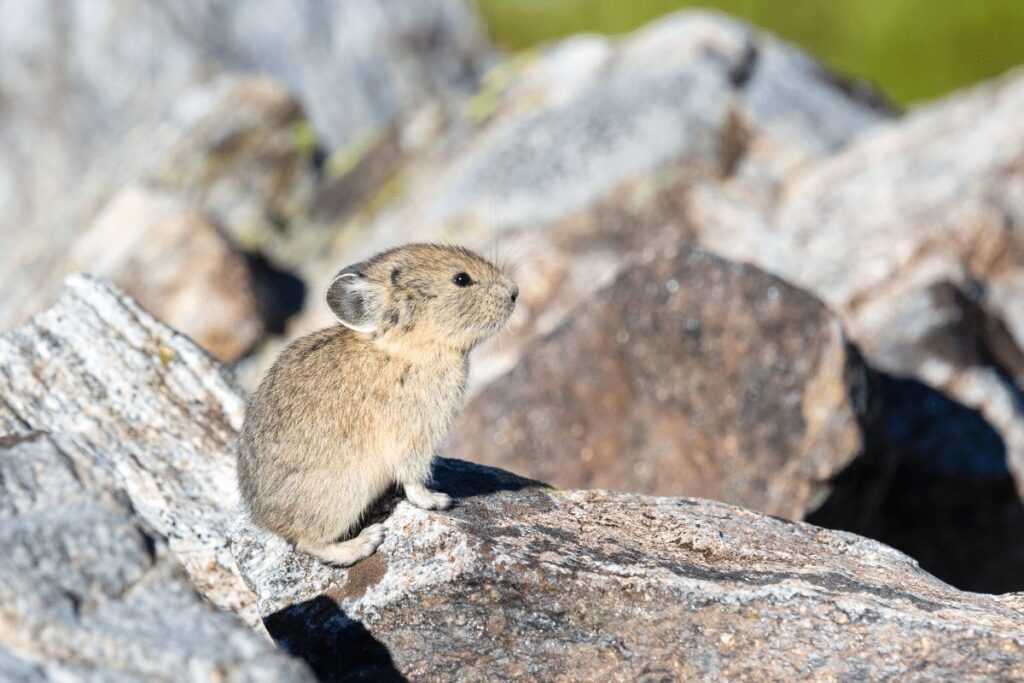
Though pikas are not currently endangered, their populations have declined in some areas due to habitat loss and fragmentation.
Pikas are especially vulnerable to climate change because they cannot migrate to new areas as temperatures rise. conservation efforts aimed at protecting pika populations include restoring degraded habitats and preventing further habitat loss.
Pika are small, rodent-like creatures that are closely related to rabbits and hares. They are found in the mountains of North America, Europe, and Asia. Pikas are known for their high-pitched “bark,” which can be heard echoing through the mountains.
In Great Basin National Park, pika can be found in talus fields and rocky areas above the treeline. They are generally shy animals, but can be curious about visitors. Because they are so small, pika are vulnerable to predators such as hawks, owls, and foxes.
Red Foxes
Red foxes can be found in a variety of habitats including forests, grasslands, and even arctic tundra. In Great Basin National Park, red foxes inhabit the lower elevations near the park’s boundaries.
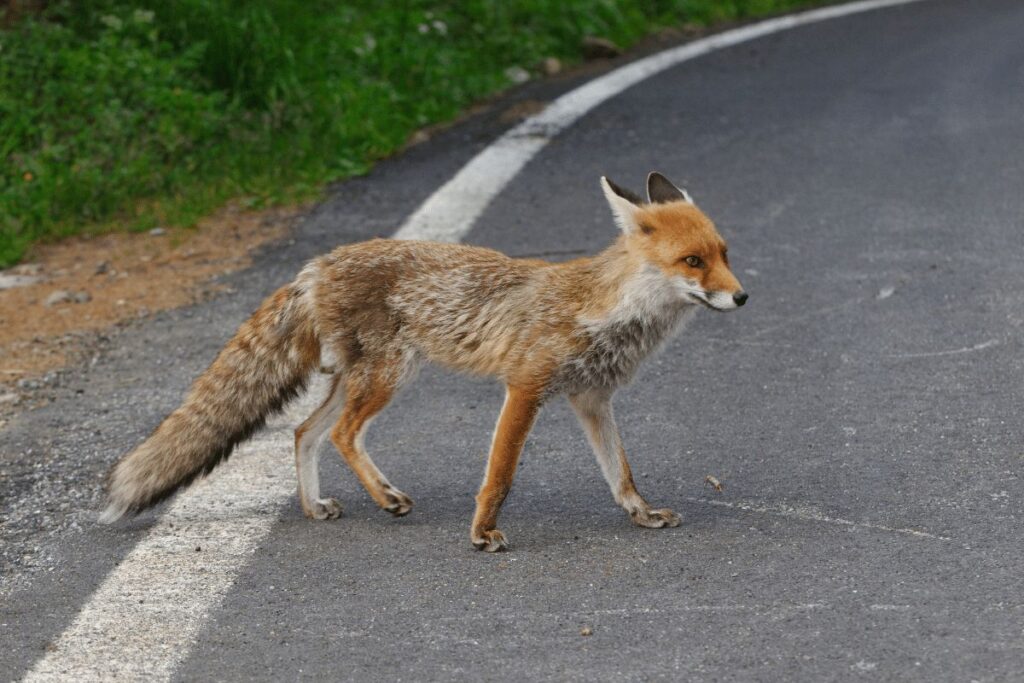
These cunning predators are known for their intelligence and resourcefulness, and they play an important role in the ecosystem by preying on small mammals and rodents. Red foxes are also popular with many birders, as they will often hunt for birds and their eggs.
If you’re lucky enough to spot a red fox during your visit to Great Basin National Park, be sure to keep your distance and admire these beautiful animals from afar.
Coyotes
The Great Basin National Park is home to a variety of wildlife, including coyotes. Coyotes are a type of canine that is closely related to the dog. Coyotes are smaller than wolves and usually have a mix of brown, gray, and black fur. They are common in North America and can be found in many different habitats, including forests, grasslands, and deserts.
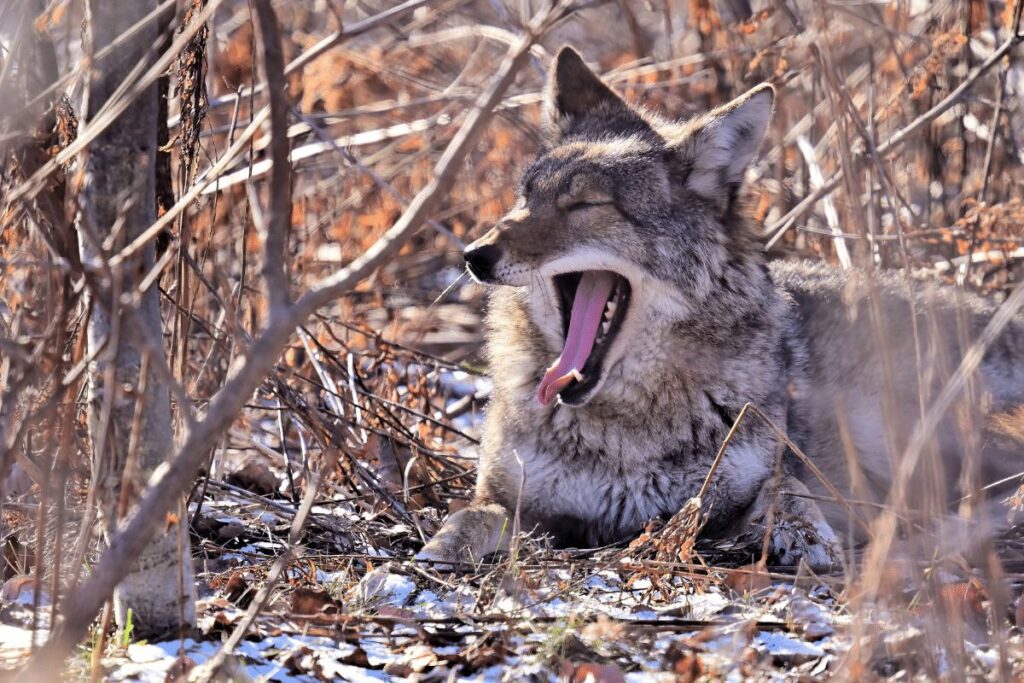
Coyotes typically live in packs of six to ten animals, but packs of up to thirty have been observed. The size of the pack usually depends on the availability of food.
Coyotes are omnivorous animals and will eat just about anything, including fruits, vegetables, small mammals, and carrion. In some areas, coyotes have become a nuisance because they prey on livestock such as sheep and chickens.
If you’re lucky enough to see a coyote during your visit to Great Basin National Park, be sure to give them plenty of space.
Although they generally avoid humans, they may become aggressive if they feel threatened or if they are protecting their food or young. If you see a coyote while hiking, make sure you keep your distance and do not attempt to feed them.
Elk
Elk are massive creatures can weigh up to 1200 pounds and stand six feet tall at the shoulder. Elk are most often seen in the meadows and open forests of the park, but they can also be found in the mountains and along the rivers.

Elk are browsers, which means they eat mostly leaves, twigs, and grasses. In the winter, when food is scarce, elk will eat bark and even lichens off of trees.
You can often see elk eating in large groups, called herds. During the mating season, known as rutting, male elk compete for females by bugling–a loud call that echoes through the mountains.
If you’re lucky enough to see an elk in Great Basin National Park, please remember to give them plenty of space. These wild animals can be dangerous if they feel threatened.
Mountain Lion
Mountain lions, also known as pumas or cougars, are one of the most iconic animals of North America.
Although they once ranged across the entire continent, they are now primarily found in the western United States. In Great Basin National Park, mountain lions inhabit the mountains and canyons.
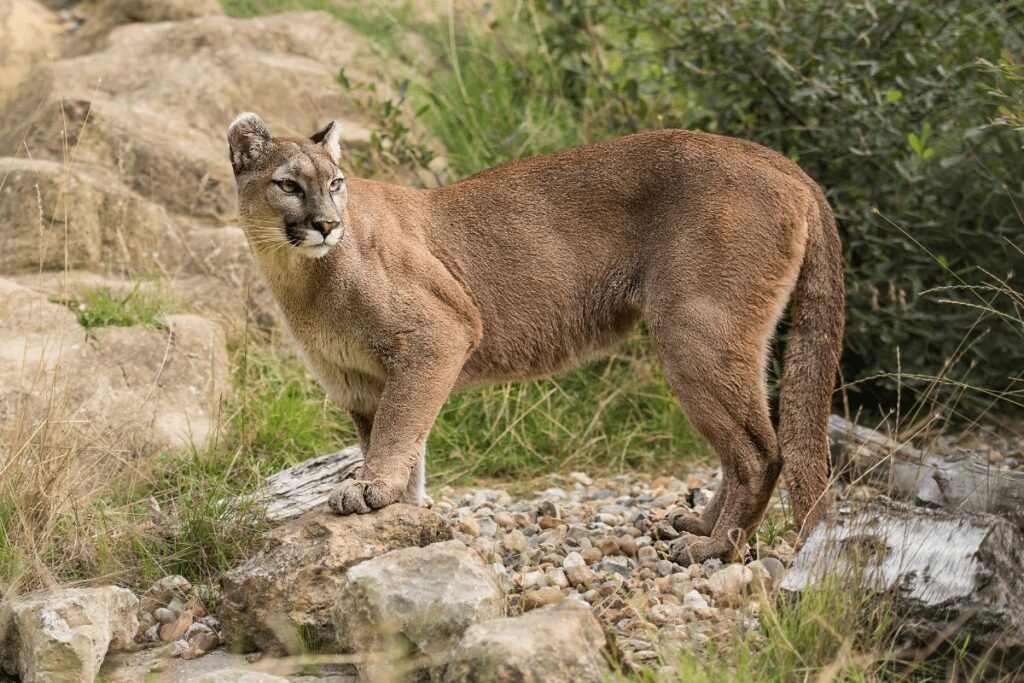
Mountain lions are large cats, weighing up to 200 pounds. They have tawny fur with black spots on their faces and legs. Mountain lions are solitary predators that hunt at night.
They stalk their prey, which can include deer, elk, and bighorn sheep, before leaping on them and killing them with a suffocating bite to the throat.
Although mountain lions are feared by many people, they rarely pose a threat to humans. If you do encounter a mountain lion in Great Basin National Park, stay calm and don’t run away.
Instead, make yourself look as big as possible by holding your arms out or waving a jacket over your head. Speak firmly and slowly back away from the animal until it loses interest and walks away.
Ringtail Cat
Ringtail cats are very adept at climbing and jumping, and are able to scale cliffs and trees with ease. They are also excellent swimmers.
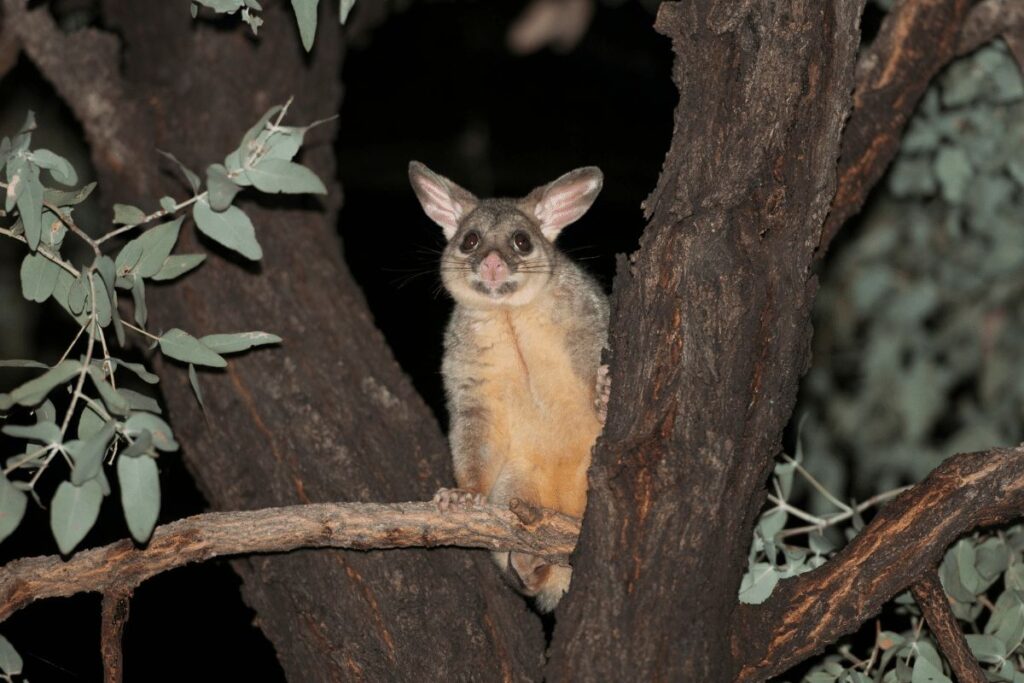
Despite their name, ringtail cats do not have tails that are particularly long or bushy.
Their tail is actually quite short, but it is very muscular and flexible, which allows them to use it like a fifth limb when climbing or jumping. Ringtail cats are mostly nocturnal, so they are not often seen by humans during the day.
Although they are relatively small animals, ringtail cats play an important role in the ecosystem of Great Basin National Park.
They help to keep populations of mice and other small rodents in check, which can prevent plant damage and disease transmission.
Pronghorn Antelope
Pronghorn Antelope can weigh up to 150 pounds and measure up to 4 feet at the shoulder, while females are a bit smaller, topping out at around 125 pounds.
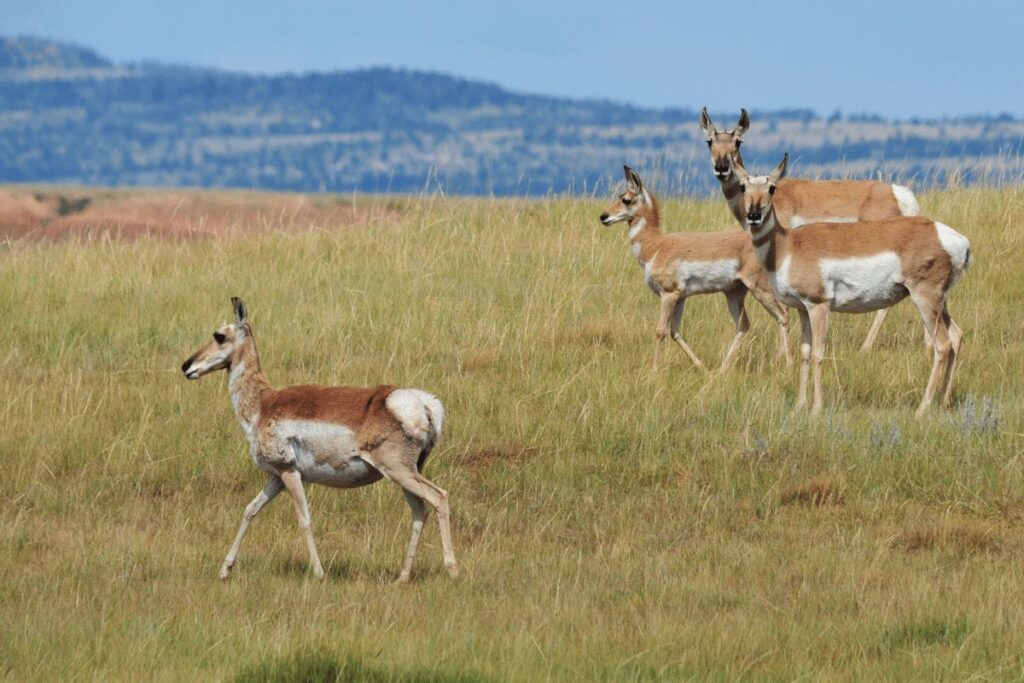
The pronghorn’s primary predators are coyotes and bobcats, but they will also fall prey to eagles, hawks, and even humans. Pronghorns are herbivores, eating primarily grasses and shrubs.
Pronghorns are an iconic species of the Great Basin, and one of the main attractions for visitors to see when coming to Great Basin National Park. They are relatively easy to spot due to their size and coloration.
Pronghorns are generally brown with white underbellies and throats.
They have dark patches around their eyes, which help them blend in with their surroundings when they are resting or seeking cover from predators. Pronghorns also have long legs and necks, which give them an elegant appearance.
California Quail
The California Quail is a species of quail found in the western United States and Mexico. The adult male has a black face and topknot, while the female has a gray-brown face and no topknot. Both sexes have a white belly and breast, and brown back and wings.

These birds are shy and secretive, and can be difficult to see in the wild. However, their distinctive calls are often heard before the birds are seen.
California Quail can be found in open woodlands, chaparral, and brushy areas throughout Great Basin National Park. They prefer areas with dense ground cover such as grasses or shrubs, where they can find food and shelter from predators.
During the breeding season, pairs of quail build nests on the ground beneath shrubs or other cover. Females lay 5-12 eggs per clutch, which hatch after about 2 weeks. Both parents care for the young chicks until they are old enough to fly and fend for themselves.
These birds are omnivorous, feeding on a variety of seeds, berries, insects, and other small animals. In winter months, when food is scarce, they will form large flocks known as “coveys” in order to increase their chances of finding food.
California Quail are an important part of the ecosystem in Great Basin National Park, providing food for predators such as foxes and snakes, as well as controlling populations of small mammals and insects through their for
Clark’s Nutcrackers
Clark’s nutcrackers are very intelligent and have a very special relationship with the park’s lodgepole pine trees.
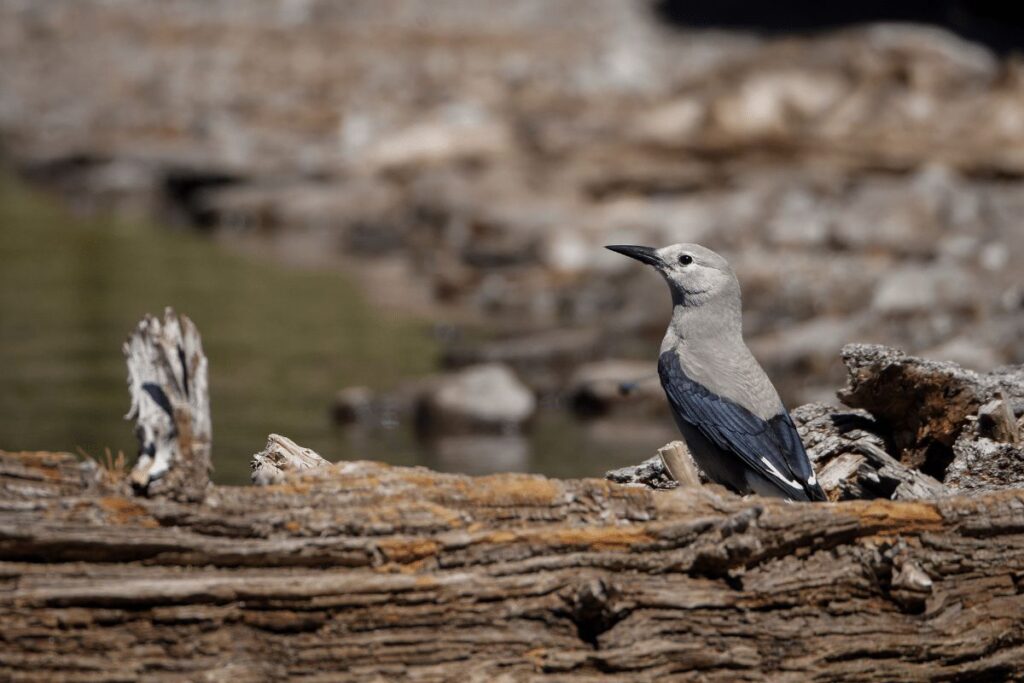
The nutcrackers collect the pine nuts from the cones of the trees and store them in small holes that they dig in the ground. They then use their long, curved beaks to crack open the nuts and eat the meat inside.
The nutcrackers play an important role in the growth and reproduction of the lodgepole pines. When they store nuts in the ground, they help to spread pine seeds around the forest floor.
This helps to ensure that new lodgepole pines will grow in areas where there were none before. The Clark’s nutcrackers are an important part of the ecological balance in Great Basin National Park.
Black-headed Grosbeak
The black-headed grosbeak (Pheucticus melanocephalus) is a medium-sized songbird with a black head, throat, and upper back, and yellow wings and tail. Males also have a yellow breast, while females are brownish-yellow. Both sexes have white bellies and grayish legs. Black-headed grosbeaks are found in western North America, from Alaska to Mexico.
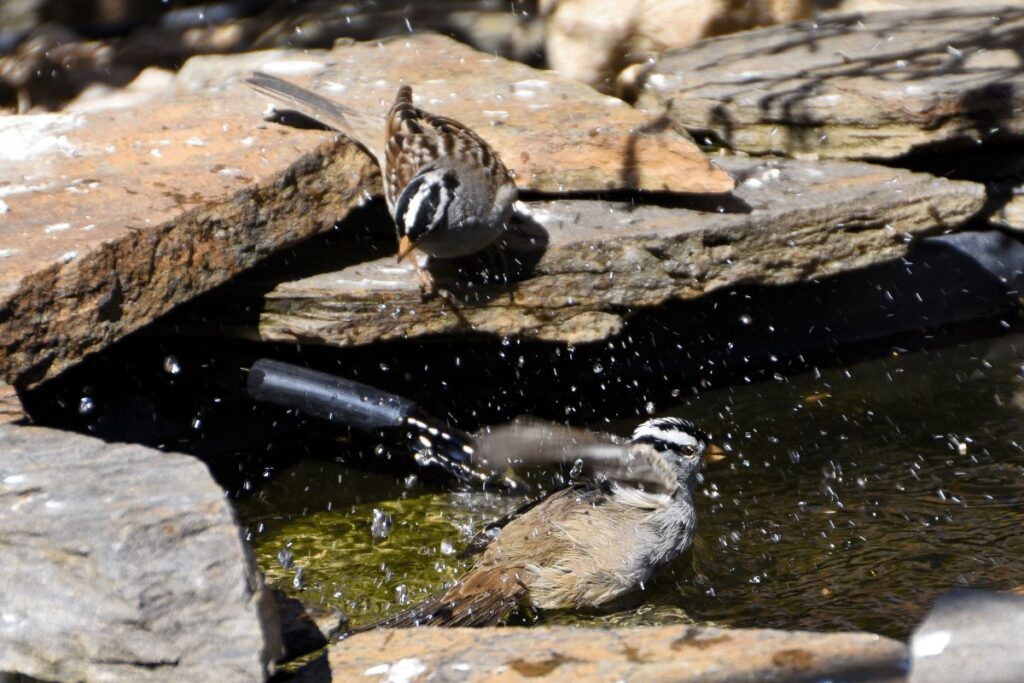
In Great Basin National Park, black-headed grosbeaks can be found in montane forests and riparian habitats near meadows and streams. They eat insects, spiders, berries, and seeds. Black-headed grosbeaks build nests of twigs, grasses, leaves, and mosses in trees or shrubs. Females lay 3-5 eggs per clutch.
Black-headed grosbeaks are vocal birds with a variety of songs and calls. The male’s song is a series of loud notes that rise and fall in pitch, while the female’s call is a softer trill. Black-headed grosbeaks are not currently listed as threatened or endangered. However, their numbers have declined in recent years due to habitat loss and fragmentation.
Western Kingbird
The Western Kingbird (Tyrannus verticalis) is a medium-sized flycatcher found throughout the western United States and Mexico. It is the largest member of the genus Tyrannus, and one of the most widespread tyrant flycatchers in North America. The Western Kingbird is a highly versatile bird, able to adapt to a variety of habitats.
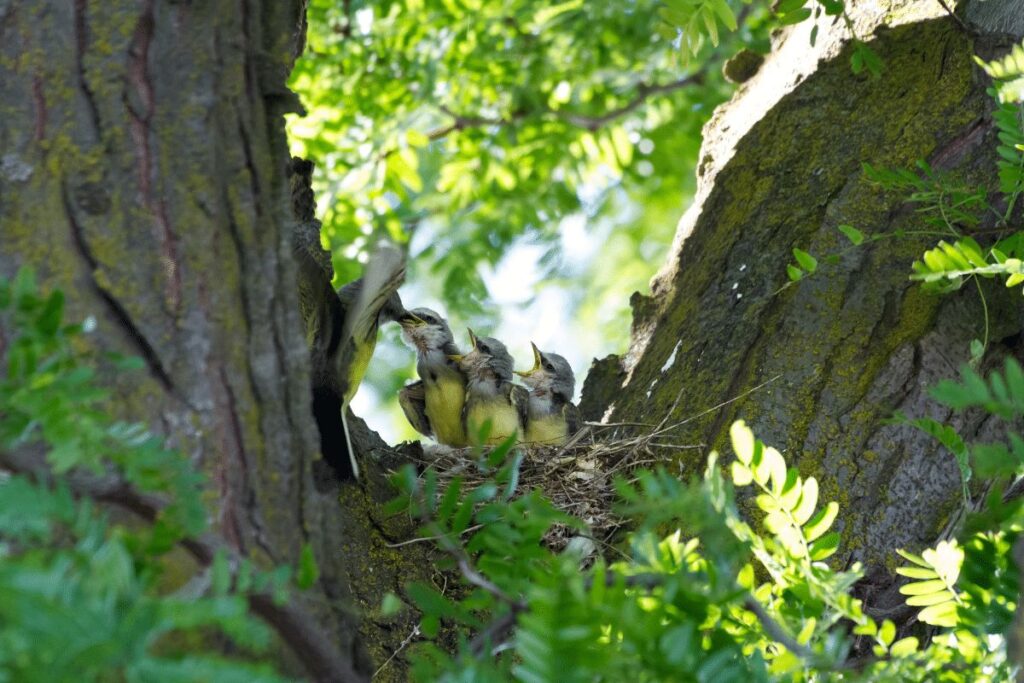
The Western Kingbird is a grayish-brown bird with a white belly and chest. The wings are dark with two white bars, and the tail is long and narrow with a forked tip. The bill is black and hooked, and the legs are black. The adult male has a orange-red crown, while the adult female has a brown crown. Juveniles have no crown coloration.
The Western Kingbird feeds on insects, which it catches in mid-air or on the ground. It will also eat berries and fruit. The Western Kingbird nests in trees, shrubs, or cacti, usually near open areas such as fields or roadsides.
The nest is built by both parents out of twigs, leaves, grasses, paper, cloth, feathers, string, or other materials.
The Western Kingbird is not considered to be threatened or endangered at this time. However, like all birds, it is affected by habitat loss due to human activity such as agriculture, logging, and development.
Black-tailed Jack Rabbit
The black-tailed jackrabbit is a species of hare that is found in the Great Basin region of North America. The adult jackrabbit is typically between 18 and 24 inches long, with black fur on its back and white fur on its belly. Its tail is black with a white tip, and it has long hind legs that allow it to leap great distances.
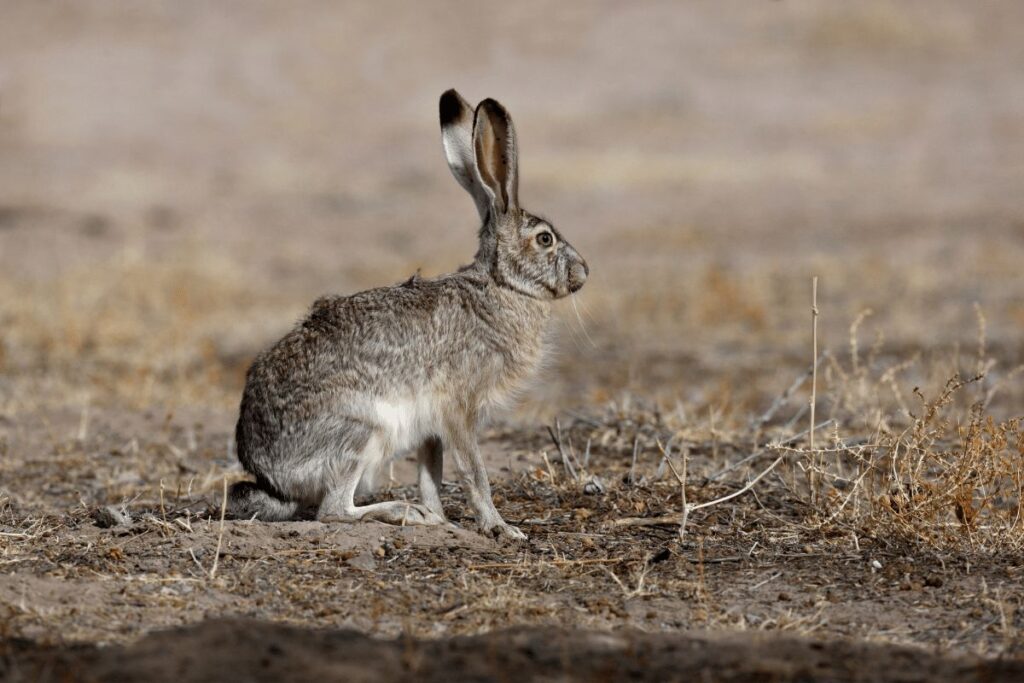
The jackrabbit is a timid creature that spends most of its time hiding in the sagebrush. It emerges at dawn and dusk to feed on grasses and other vegetation. If frightened, the jackrabbit will run away in a zigzag pattern to avoid being caught.
The black-tailed jackrabbit is an important part of the food chain in the Great Basin region. It is preyed upon by coyotes, foxes, bobcats, and hawks.
Wildlife on the Wheeler Peak Scenic Drive
The Wheeler Peak Scenic Drive in Great Basin National Park is a great way to see wildlife. The drive takes you through a variety of habitats, including sagebrush steppe, aspen and conifer forests, and subalpine meadows.
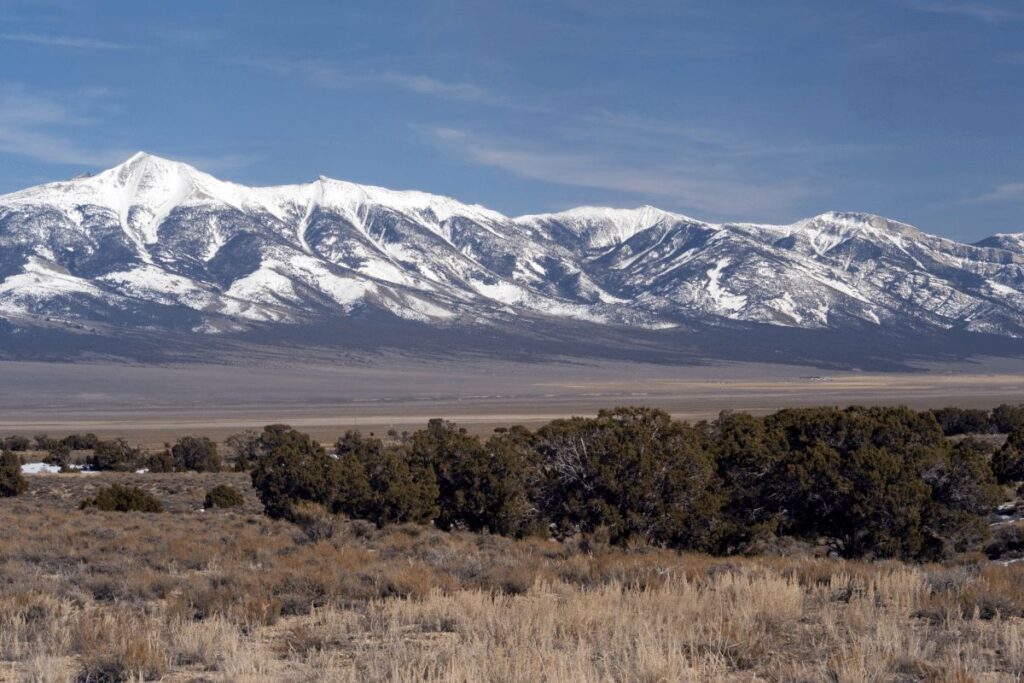
Along the way, you might spot some of the park’s resident wildlife, including bighorn sheep, mule deer, pronghorn antelope, bobcats, and several species of birds. Keep your eyes peeled and your camera ready – you never know what you’ll see!
Wildlife viewing tips in The Great Basin National Park
There are a few things to keep in mind when wildlife viewing in The Great Basin National Park. First, remember that all animals in the park are wild and should not be approached.
Also, please do not feed the animals as this can disrupt their natural diet and behavior patterns. Finally, please be considerate of other visitors and do not block trails or viewpoints while you are observing wildlife.
Some of the best places to view wildlife in The Great Basin National Park are along the Lehman Caves trail, where you might see bats; near Wheeler Peak summit, where you might see pika; in sagebrush meadows near Baker Creek or at Lower Lehman Creek campground, where you might see pronghorn antelope; or along roadsides early morning or evening hours, where you might see mule deer.
Binoculars are always helpful for getting a closer look at wildlife from a distance.
Be sure to follow the park rules when viewing and photographing wildlife. If you observe any wildlife that appears to be injured or in distress, please report it to a Park Ranger as soon as possible.
Finally, please leave no trace of your visits and do not disturb any wildlife habitat.
Unique Ecosystems of Great Basin National Park
Great Basin National Park is a treasure trove of diverse ecosystems, each with its own distinct flora and fauna. From the towering peaks of the alpine zone to the fragrant sagebrush steppe, the park’s varied landscapes offer visitors an unparalleled opportunity to explore and appreciate the beauty of nature.
In this section, we will delve into the unique ecosystems of Great Basin National Park, including the Alpine, Montane, Riparian, Sagebrush, and Bristlecone Pine Forest ecosystems.
Alpine Ecosystem
Found at the highest elevations of the park, the alpine ecosystem is characterized by its harsh weather conditions, rocky terrain, and sparse vegetation.
Despite these challenges, a variety of hardy plant and animal species have adapted to thrive in this inhospitable environment.
The American Pika, a small, rabbit-like mammal, can be found scurrying among the rocks, while the Mountain Goat navigates the rugged terrain with ease.
Alpine wildflowers, such as the Sky Pilot and Alpine Forget-Me-Not, add a splash of color to the stark landscape during the brief summer growing season.
Montane Ecosystem
Descending from the alpine zone, the montane ecosystem encompasses the park’s mid-elevation forests and meadows. These habitats are home to a diverse array of plant and animal species.
Towering conifers, such as the Engelmann Spruce and Limber Pine, dominate the landscape, providing critical habitat for birds like the Mountain Chickadee and Red-breasted Nuthatch.
Mule deer and elk graze in the park’s meadows, while predators like the cougar and bobcat stalk the forests in search of prey. Wildflowers, including the Indian Paintbrush and Lupine, paint the meadows with vibrant hues during the summer months.
Riparian Ecosystem
The park’s riparian ecosystems are found along the banks of its streams, rivers, and lakes. These lush, green oases are hotspots of biodiversity, providing critical habitat for a wide range of plant and animal species.
Riparian vegetation, such as cottonwood trees and willows, creates a dense canopy that offers shelter and nesting sites for numerous bird species, including the Yellow Warbler and Willow Flycatcher.
The park’s waterways also support a variety of aquatic life, including trout, amphibians, and invertebrates like dragonflies and damselflies.
Sagebrush Ecosystem
The sagebrush ecosystem, characterized by its fragrant, sage-covered landscape, dominates much of the park’s lower elevations.
This expansive habitat is home to a host of plant and animal species uniquely adapted to its arid conditions. The Greater Sage-Grouse, a ground-dwelling bird known for its elaborate courtship displays, can be found in the park’s sagebrush steppe.
Pronghorn, the fastest land mammal in North America, are also frequently seen grazing on the park’s sagebrush flats. Other inhabitants of this ecosystem include the Sage Thrasher, Pygmy Rabbit, and Sagebrush Lizard.
Bristlecone Pine Forest
The Bristlecone Pine Forest, found at high elevations within the park, is home to some of the oldest living organisms on Earth. The ancient Bristlecone Pines, with their gnarled trunks and wind-sculpted branches, have withstood the test of time, some living for more than 5,000 years.
These resilient trees have developed unique adaptations, such as dense, resinous wood, to protect themselves from harsh weather conditions and pests.
The Bristlecone Pine Forest provides habitat for several bird species, such as the Clark’s Nutcracker, which has a symbiotic relationship with the trees, helping to disperse their seeds in exchange for a food source.
As you explore the unique ecosystems of Great Basin National Park, be prepared to encounter a wealth of natural beauty and biodiversity.
Each ecosystem offers its own distinct experiences, from the serene tranquility of a Bristlecone Pine Forest to the vibrant energy of a bustling riparian habitat.
To fully appreciate the park’s diverse landscapes, consider hiking through various ecosystems on a single trail or taking part in ranger-led programs that delve into the intricacies of these habitats.
When venturing through these ecosystems, remember to practice Leave No Trace principles to minimize your impact on the environment.
Stay on designated trails, properly dispose of waste, and respect the park’s wildlife by maintaining a safe distance and not feeding animals.
Endangered and Threatened Species in Great Basin National Park
Great Basin National Park is home to a variety of plant and animal species, many of which have adapted to thrive in the park’s unique ecosystems.
However, some species within the park face challenges such as habitat loss, climate change, and human disturbance, leading to declines in their populations. In this section, we will discuss endangered and threatened species in the park, conservation efforts to protect them, and tips for responsible wildlife viewing and safety.
Species of Concern
Several species in Great Basin National Park are considered endangered, threatened, or of special concern due to their declining populations or vulnerability to various threats.
These species include the Townsend’s Big-eared Bat, the Greater Sage-Grouse, and the Relict Dace, a small, rare fish found only in a few isolated springs within the park.
Conservation Efforts
In response to the challenges faced by these species, Great Basin National Park has implemented various conservation measures aimed at protecting and restoring their habitats, monitoring populations, and raising awareness about their plight. Some of these efforts include:
- Habitat restoration projects, such as removing invasive plant species that outcompete native vegetation and negatively impact the habitats of threatened and endangered species.
- Collaborative efforts with other agencies, organizations, and researchers to develop and implement effective conservation strategies based on scientific data and best practices.
- Monitoring programs to track the status of endangered and threatened species, assess the effectiveness of conservation efforts, and inform future management decisions.
- Educational initiatives, including interpretive programs and outreach materials, to raise public awareness about the importance of protecting the park’s endangered and threatened species and their habitats.
Tips for Wildlife Viewing and Safety in Great Basin National Park
As a visitor to Great Basin National Park, you have the opportunity to observe and appreciate the park’s diverse wildlife, including its endangered and threatened species. To ensure a safe and enjoyable experience, consider the following tips for responsible wildlife viewing and safety:
Best Times for Wildlife Viewing
- Dawn and dusk are often the best times for wildlife viewing, as many animals are more active during these cooler parts of the day.
- Be patient and observant. Some species, especially those that are endangered or threatened, may be elusive or difficult to spot. Spend time quietly observing an area, and you may be rewarded with a sighting.
- Utilize viewing platforms and designated wildlife viewing areas, which are designed to minimize disturbance to animals while providing visitors with excellent opportunities for observation.
Wildlife Safety Tips
- Maintain a safe distance from all wildlife. Use binoculars or a telephoto lens for close-up viewing, and never approach or attempt to touch an animal.
- Do not feed wildlife, as this can lead to negative interactions between animals and humans and disrupt natural behaviors.
- Be aware of your surroundings and follow park regulations to protect both yourself and the park’s wildlife.
Ethical Wildlife Photography
- Prioritize the well-being of the subject and its environment over capturing the perfect shot. Avoid causing stress or disturbance to wildlife by keeping a respectful distance and adhering to park regulations.
- Use a telephoto lens to capture close-up images without encroaching on an animal’s personal space.
- Never bait or manipulate wildlife to get a desired shot, as this can disrupt their natural behaviors and cause unnecessary stress.
- Educate yourself about the species you are photographing and their specific needs, habits, and sensitivities. This knowledge can help you make informed decisions about how to photograph them responsibly.
- Share your photos and experiences with others to raise awareness about the importance of conservation and respecting wildlife. Encourage responsible wildlife photography practices within your own networks.
Conclusion
Great Basin National Park offers a truly unique and unforgettable adventure for nature enthusiasts and casual visitors alike.
With its diverse ecosystems, breathtaking landscapes, and remarkable wildlife, the park provides endless opportunities for exploration, discovery, and appreciation of the natural world.
As you traverse the park’s trails, observe its inhabitants, and immerse yourself in its rich biodiversity, you’re sure to come away with a deeper understanding and connection to the environment.
As you embark on your adventure in Great Basin National Park, remember to practice responsible and ethical behavior to help preserve this exceptional place for future generations.
By respecting the park’s wildlife, following Leave No Trace principles, and supporting conservation efforts, you can play a role in protecting the park’s delicate ecosystems and ensuring their continued vitality.
So lace up your hiking boots, grab your binoculars, and get ready to experience the wonders of Great Basin National Park. With every step, you’ll be immersed in the beauty of the park’s flora and fauna, and you’ll create memories that will last a lifetime.

